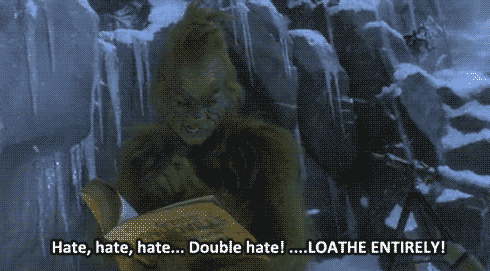Holiday season sees a saturation of the cinematic market with an influx of wholesome but cringe-worthy holiday movies. Is it the audience that asks for it or is the industry too used to churning out “tidings of comfort and joy”? Read more to find out.
Be it “Rang Barse” or “Last Christmas”, festivals end up being not just a part of our real lives but also our reel lives. In the 20th century, cinema is not barred to only reflecting reality but rather moves beyond that ambit to build upon our lived realities and create an alternate world as believed by media studies scholar John Mundy. Every festive season is accompanied by an influx of new or repeated holiday cinema against a backdrop of the belief that this is the time when everything is right in the world.
But can the cinema industry be completely blamed for this saturation of the market during the holidays? In the end, it is only catering to a society that was deeply embedded into the concept of religious festivities and now finds itself dependent upon a highly glamourous, minutely religious rendition of the same traditions. Rather than being restricted to religious beliefs, festivals have been gaining traction as events having aesthetic appeal and a more universal characteristic, the most all-consuming being Christmas.
…being a part of a family that doesn’t really celebrate (Christmas), the day often ends up being a bit disheartening. So, I have made it a tradition to find and watch that perfect Christmas movie every year because it helps bring that sense of joy, comfort, and “Christmas cheer” that I can’t find in my immediate vicinity.”, explains Hitanshi Jain, a first-year student at DCAC.
Psychologists have gone on to distinguish happiness into two types: hedonic and eudaimonic. The former is more transitory and refers to the sensations of pleasure and enjoyment, whereas the latter is a more resonating and long-lasting feeling, rising from experiences that carry a sense of meaning and purpose. Both of these kinds of happiness are considered important for the overall well-being of humans and this is what the cinematic industry has been tapping into: with its humour, traditions, decorations, and backdrops catering to the hedonic approach and the plotline of happiness over misery catering to the eudaimonic.
Most Christmas movies are created around the same storyline: family issues, conflicts, chaos, and negative emotions; all of them getting wrapped up with a happy ending where everyone finds joy and hope occupies the center stage. This craze has not only been fueled by the audience but also by the production companies itself with entities like MarVista Entertainment investing 50% of its development funds on holiday movies alone. When exploring the science of the why behind this, we come upon Christopher Deacy’s statement in his 2016 book “Christmas as Religion” about how Christmas movies act as a “barometer of how we might want to live and how we might see and measure ourselves”, tapping into the feeling of belongingness, familiarity, or the idea of “home”. In the opinion of Penne Restad in her book ‘Christmas in America’, she describes how many movies like ‘Holiday Inn’ (1942) were created from the perspective of providing another line of thought and emotions to the war-stricken atmosphere in America, showcasing a world which “has no dark side”. This notion has extended over the last century into every holiday cinema experience, promoting emotional wealth over materialist or consumerist tendencies and glorifying the essential happiness of humankind while disregarding the misery surrounding it.
The essence of these movies is that they don’t make you feel that you are alone during the holiday season and that you belong somewhere, to someone or to something.”, says Srivarsha Bhukya, a first-year student at LSR.
Each holiday movie ends up being this blank canvas that we know will end up in only the most beautiful colours, barring any possibility of messes, chaos, or disappointment. In a very Dr. Suess accent— these movies make us see that the flawed mirror still reflects that golden light, that the teared-up gift wrappers contained happiness inside, and that everything considered, it’s a wonderful life.
Read also “How to Kill Time Until Reopening” https://dubeat.com/2022/01/how-to-kill-time-until-reopening/
Feature Image Credits: DU Beat Archives
Manasvi Kadian







































